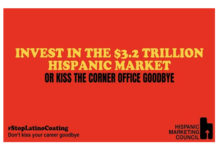A new report from WiHTL, the community dedicated to increasing diversity and inclusion in the hospitality, travel and leisure industry, has revealed that the gender pay gap has increased in both travel and hospitality.
The Gender Pay Gap Report 2023 for the sector, produced in partnership with PwC UK, found that travel, which has the highest pay gap of the three sectors, has seen the biggest increase in the gender pay gap with the gap increasing by 2% from 20.4% to 22.4% over the last year. The hospitality sector has also seen an increase from 4.2% to 5.2%.
COST-OF-LIVING CRISIS
The report attributes the increase in the gender pay gap in these sectors to the cost-of-living crisis, with inflationary pressures causing a spike in costs and uncertainty in demand. In recognising these pressures, some organisations made changes to pay which have inevitably impacted the gender pay gap.
According to PwC’s recent Hopes & Fears survey, the economic squeeze is continuing to drive pay demands- over a third of UK workers are planning to ask for a pay rise in the next 12 months, up 7 percentage points from 2022. Depending on when and how the pay changes were implemented, they may have had an impact on the pay gap reporting numbers in hospitality and travel, with these one-off payments potentially contributing to higher hourly pay and bonus figures. As many senior roles are traditionally held by men who are often the main recipients of bonuses, these changes may be exacerbating the gap.
The leisure sector on the other hand reported a decrease in its gender pay gap, from 8.3% to 6.7%. Nevertheless, these figures highlight the challenge facing the industry as there is clearly much work to be done to close the gap. Eliminating the gender pay gap requires a deep understanding of the underlying issues combined with a firm commitment to delivering long-term, sustainable change, noted the report.
UNDERSTANDING UNDERLYING INEQUALITIES
Commenting on the findings, Tea Colaianno, Founder and Chair of WiHTL and Diversity in Retail, said: “The reporting of gender pay gap numbers is very helpful, but it is not enough in itself to significantly move the dial. The focus needs to move beyond reporting numbers to understanding the underlying inequalities and devising action plans to address these issues. Given the time frame it is probably fair to say that the combination of the pandemic and the cost-of-living crisis also had a disruptive impact. To address this issue there needs to be a drive to introduce policies and practices that remove barriers to women returning to work after having children, along with a visible commitment to developing the pool of talented women for leadership roles.”

GENDER PAY GAP DRIVERS
In an environment of increasing stakeholder expectations “it’s no longer enough for organisations to rely solely on the gender pay gap, which can fail to capture the true story of fairness within an organisation”, highlighted Katy Bennett, Diversity, Equity and Inclusion Consulting Director at PwC. “Diversity, equity and inclusion reporting and broader pay transparency requirements are becoming increasingly high-profile and complex, and organisations need to consider aligning multiple metrics to create a holistic picture. Companies then need to demonstrate that they understand, and will address, the key drivers of their pay gaps through creating a credible action plan which moves the dial from reportable numbers to improving fairness through their diversity pay gap reporting and wider reporting narratives.”
Companies in the hospitality, travel and leisure sector are also embracing the reporting of other pay gap metrics including, for example, ethnicity. Whilst the government has not made ethnic pay gap reporting mandatory, it has published guidelines for companies wanting to take the next step in removing pay imbalances. The report also found that a number of companies in these sectors have already started widening their focus to incorporate their ethnic gender pay gap figures.
PAY TRANSPARENCY
The report demonstrates the need for companies to accelerate the relatively slow pace of change to interrogate the underlying drivers of pay gaps and inequalities both across their organisation and more broadly in society. It also includes a forward-looking action plan with targeted interventions and initiatives against which progress can be monitored.
Being alert to potential changes in regulation is also critical. Going forward, factors that could impact the future gender pay gap in the sector include new regulation for employers, in particular, the EU Pay Transparency Directive, which will broaden reporting and transparency requirements for organisations operating in the EU. Although this will not apply directly to employers in the UK, it may have a knock-on impact as global employers look to embed consistency and employees demand transparency of information that may be available from other organisations.
ADDRESSING ESG & WORKPLACE FAIRNESS
The report also suggests that increasing focus on inclusion and diversity as part of the environment, social and governance (ESG) and the broader fairness agenda will bring pressure to bear. The inclusion of diversity metrics including gender pay gap as well as pay equity and living wage statements within sustainability reporting frameworks will maintain and broaden this focus.
Companies will need to consider how they will address broader requirements within the “social” aspect of ESG to best articulate their narrative on fairness in the workplace, concluded the report.




































